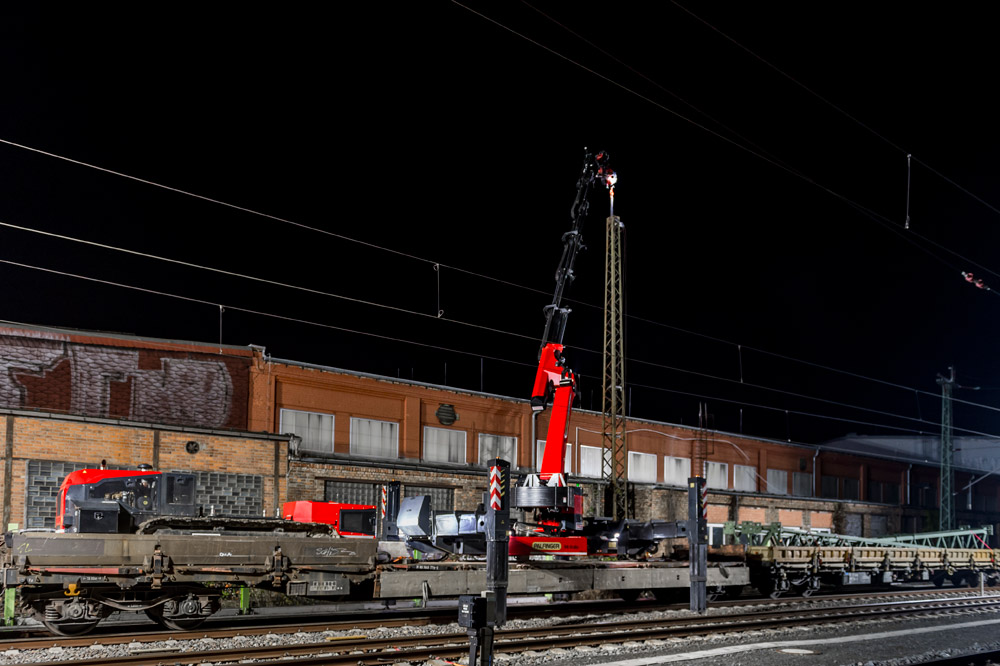Crawler-mounted Palfinger knuckleboom at train station
15 March 2021A Palfinger PCC 71.002 crawler-mounted knuckleboom crane is being used for the modernisation of Leipzig main train station in Germany.
Over 120,000 passengers use the station and more than 1,300 trains stop there on a daily basis. To keep it running at peak performance, regular maintenance and modernisation work has to be carried out quickly, precisely and without interrupting the timetable. German railway company Deutsche Bahn has awarded the project to international railway construction company Strabag Rail.
Even though the PCC 71.002 is not a railway crane—Palfinger has products in its portfolio specially designed for railway applications—it was the one considered the best solution for this jobsite’s requirements.
The crane unit and the crawler gear were delivered separately on a flat wagon. The versatility of this crane means that the overhead lines do not have to be completely dismantled. The work is carried out at night on closed tracks with deactivated overhead lines.
The heavy-duty stabilizers enable auto-leveling on inclined surfaces up to 8°, whilst still absorbing side-forces. “The H-type frame ensures optimum stability, lifting force and support, and thus the crane can be positioned freely. In addition, the crawler crane can easily lift the masts to be dismantled thanks to its extendable boom system and fly jib,” said Palfinger.
The manufacturer added that the crane’s boom geometry allows it to reach and lift loads in places that are difficult to access, such as underneath or between overhead lines. In addition, the crane operator can use the PALcom P7 remote control to steer around barriers and obstacles with precision.
The silent and emission-free operation of the PCC 71.002 has also been highly appreciated. "We chose the Palfinger crawler crane because it guarantees us the versatility we need for these special jobs,” said René Wirthgen from Strabag Rail. "Excavators and smaller equipment would never have managed to remove the many heavy masts within the allotted time.”
